In the aftermath of the Crimean War, relations between Britain and France soured. The British were particularly concerned that steam power, still a novelty, would render their traditional strategy of close blockade obsolete, and make an invasion easy to pull off. As a result, and despite experience in the Crimea suggesting that fortifications were generally overrated, a commission was set up in 1859 to determine if Britain needed new fortifications, and if so, how many. The commission recommended a large program of fortification at the ports on the south and east coasts of England, and the program was pushed through by the Prime Minister, Lord Palmerston.
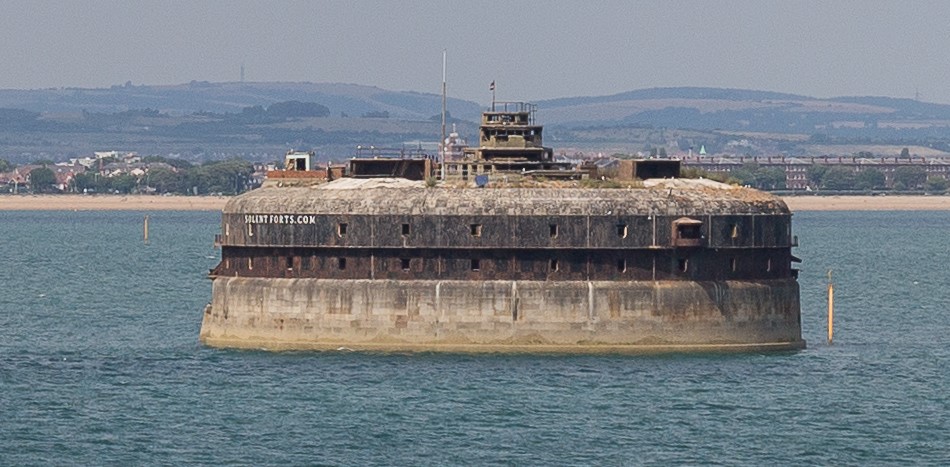
Horse Sand Fort, a sea fort guarding Portsmouth
Unfortunately, this all took place right before the American Civil War gave final proof that the masonry forts which had dominated coastal defenses for the first half of the 19th century were obsolete. The so-called Palmerston Forts mostly belonged to this type, although some forts made extensive use of iron plates to supplement their masonry walls. They also introduced a gun mounting that would become common over the next half-century, the disappearing gun. This was a variant on the barbette mount which improved protection by lowering the gun entirely below the parapet for loading, then bringing it back up to fire.1 This mount had a number of advantages over the casemates used by previous forts. It provided more protection to the crew, the positions themselves were cheaper and lighter to construct, because they were simple pits instead of massive masonry structures, and they were much harder for attackers to spot. It was also easier and faster to load the gun after it had been retracted than to do so in a more traditional mount.

An early muzzle-loading disappearing gun
The Palmerston Forts were of three broad types: traditional coastal forts, sea forts built on artificial islands to protect areas where normal forts couldn't cover, and land forts to protect against the threat of the French landing nearby, and putting a force ashore to shell the port from the landward side. The largest collection of the new forts, as usual, was intended to guard Portsmouth, and included extensive works on the Isle of Wight, and existing forts, like the 16th-century Hurst Castle were expanded and upgraded with new guns. The other traditional sites, such as Chatham, Plymouth and Dover, got their fair share of new defenses. The Royal Commission program is also notable for containing the first set of serious fortifications outside of England, with extensive works around Milford Haven in Wales and lesser positions in Scotland and Ireland. This was probably driven by concerns that steam power greatly increased the portion of the coastline exposed to French invasion.
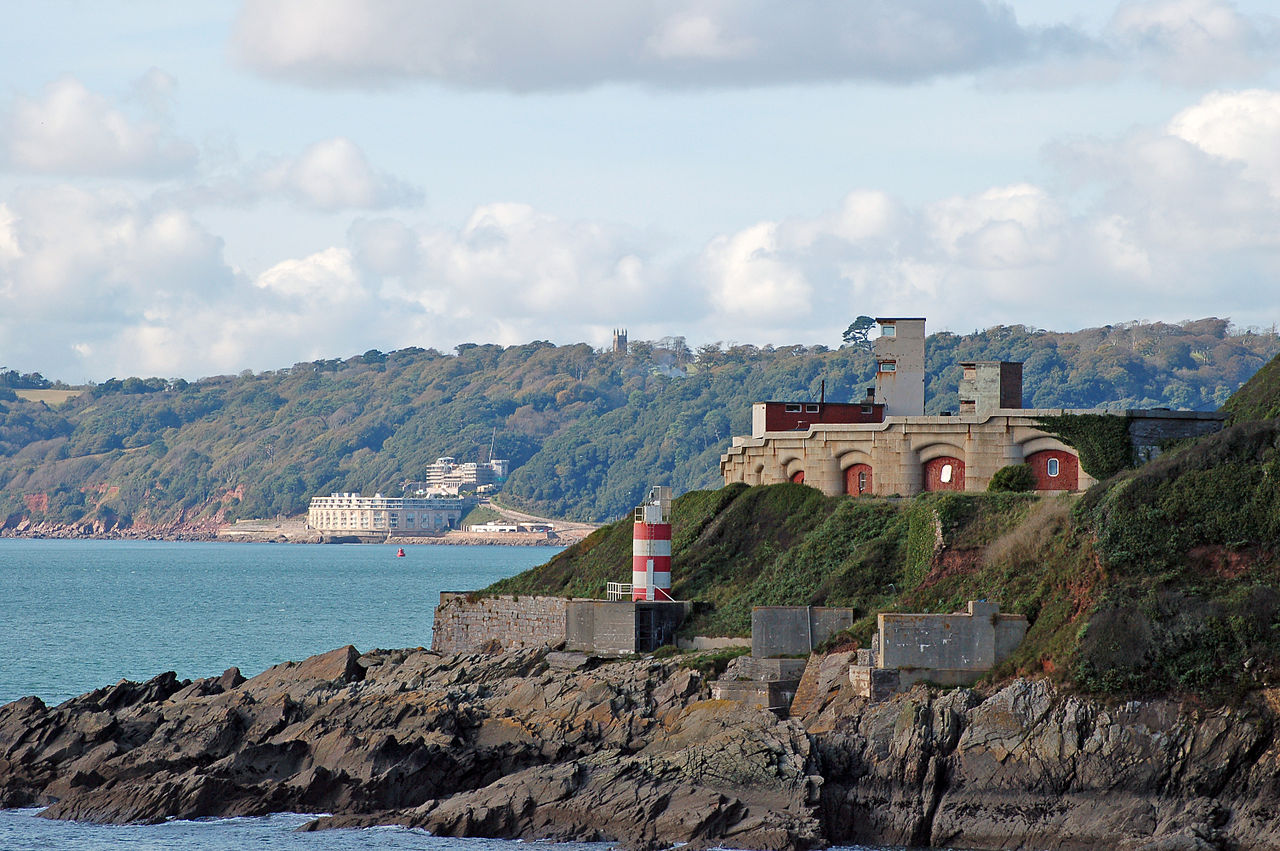
Forts Picklecombe (left) and Bovisand, Palmerston forts guarding Plymouth. Picklecombe has been converted into apartments.
In practice, the Palmerston Forts were a colossal waste of money, and quickly became known as "Palmerston's Follies". Even at the height of their rivalry in the 1860s, the French never lived up to their potential at sea, and the threat came to a dramatic end with their defeat in the Franco-Prussian War in 1870. Despite this, the works of the Palmerston program were completed over the next decade, and the British population spent the next half-century having regular invasion panics. The military was slightly more level-headed, but even they didn't realize how difficult a problem an amphibious landing was until they tried it for themselves. Forts were also built to guard the Mediterranean bases at Malta and Gibraltar, generally mirroring contemporary practices elsewhere. These are most notable for mounting a pair of 100-ton guns each, the largest muzzle-loaders ever built.2
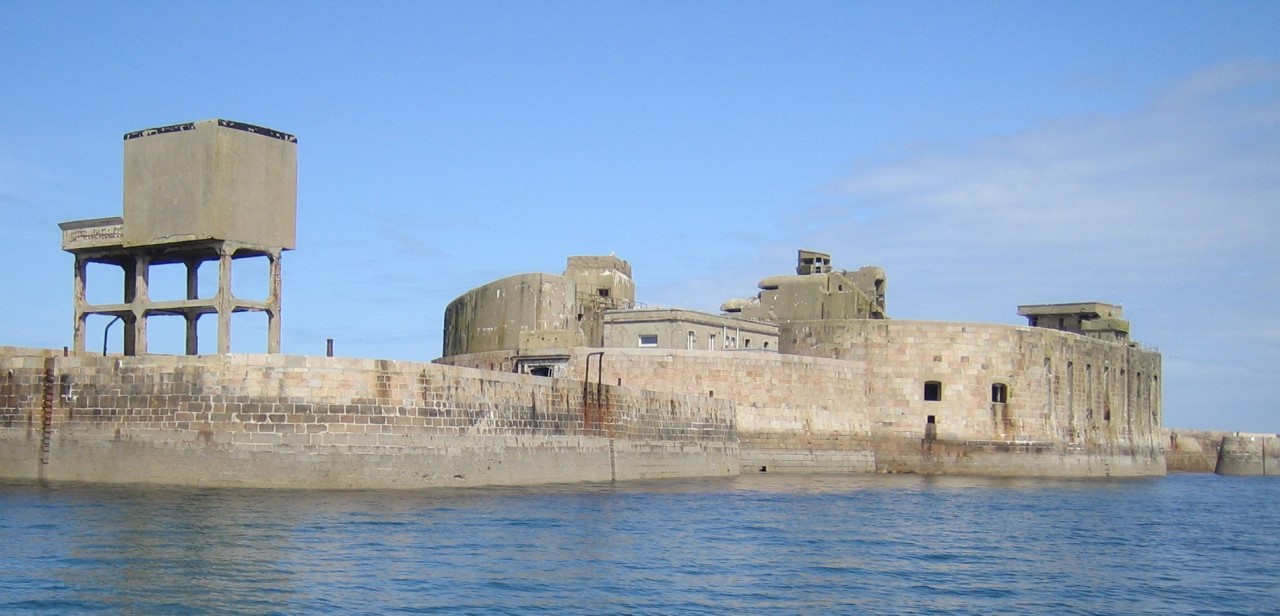
Center Fort, Cherbourg
In 1870, France and Prussia went to war. While the land campaign was a disaster for the French, they were able to seize control of the sea relatively easily. Unfortunately, fortifications guarding German harbors prevented them from doing more than imposing a blockade. After the war, perhaps inspired by these events and concerned by the threat of attack by the British, The French began building extensive coastal defense works. These were mostly masonry, as they don't seem to have run trials with rifled guns until 1886, which sparked the so-called "Torpedo Shell Crisis" when they realized all of their fortifications were obsolete. To salvage something, they covered a number of existing installations, like the defenses of Cherbourg Harbor, with concrete. This technique appears to have been unique to them.3
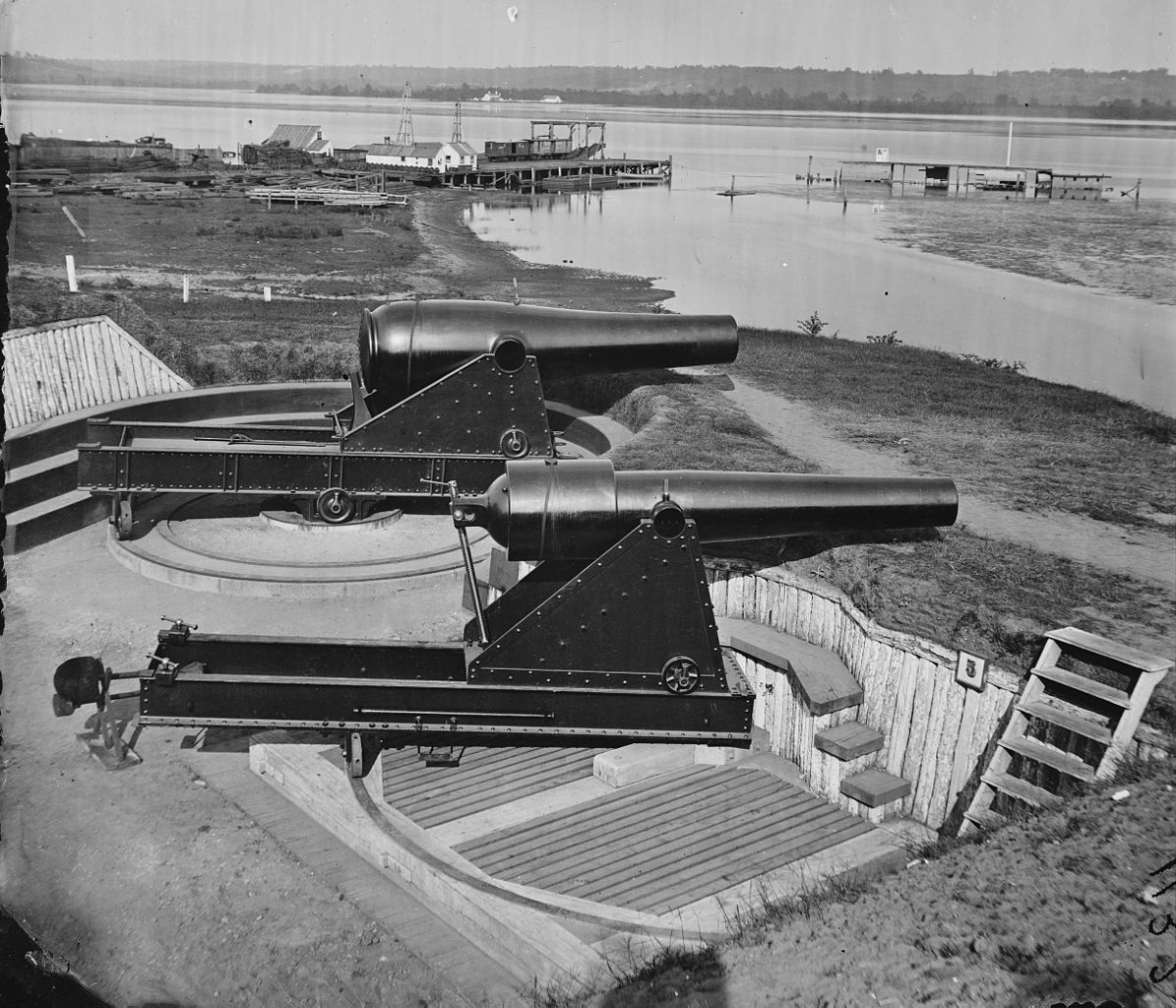
Rodman guns mounted in an earthen battery
On the other side of the Atlantic, the Civil War brought construction of the Third System to a halt. After the war, work continued on a few half-completed positions, but it was obvious from the lessons of that war that the traditional coastal fort, a large structure filled with guns, was done for. Future forts would be collections of batteries, protected primarily by earth and often armed with disappearing guns. A large program of these was begun around 1870, to replace the Third System. They would be armed with new guns, probably breech-loaders, and integrated with mortars and mines. However, funding ran out after only five years, despite a major war scare with Spain in 1873 that revealed the inadequacy of existing defenses, and most of the new batteries were never completed.
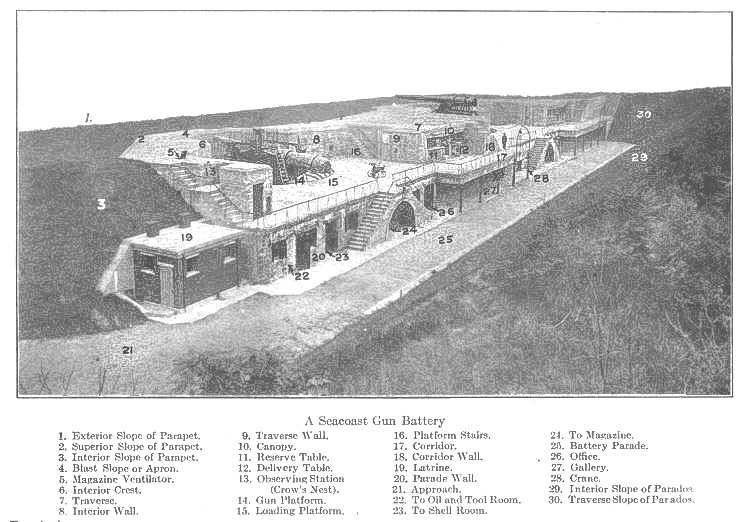
A typical Endicott-era battery
American coastal defenses languished for the next decade, which also saw the first authorization for modern steel warships in 1883, and the dawn of the "New Navy". Two years later, President Cleveland assembled a board under his Secretary of War, William Endicott. The Endicott Board spent a year evaluating the effects of improvements in armament, and recommended a massive program of fortifications at 26 coastal locations and 3 on the Great Lakes, totaling 1,300 guns and mortars of 8" or larger, as well as mines, torpedo boats and floating batteries. This program was cut repeatedly, thanks to both financial constraints and the increasing power of weapons, so the eventual total of guns installed was only 700 or so. Construction actually began in the early 1890s, and a typical battery had two to four guns on disappearing mounts, designed so that the gun's recoil would lower it straight into loading position and raise a counterweight. When the crew was ready to fire, the counterweight would lift the weapon back into firing position. Mounts on higher ground, safe from the low-angle batteries of ships of the day, received simpler and cheaper barbette mounts. The face of the battery was protected by concrete frontal walls, as much as 20' thick in some cases, with at least 30' of earth to give additional protection.
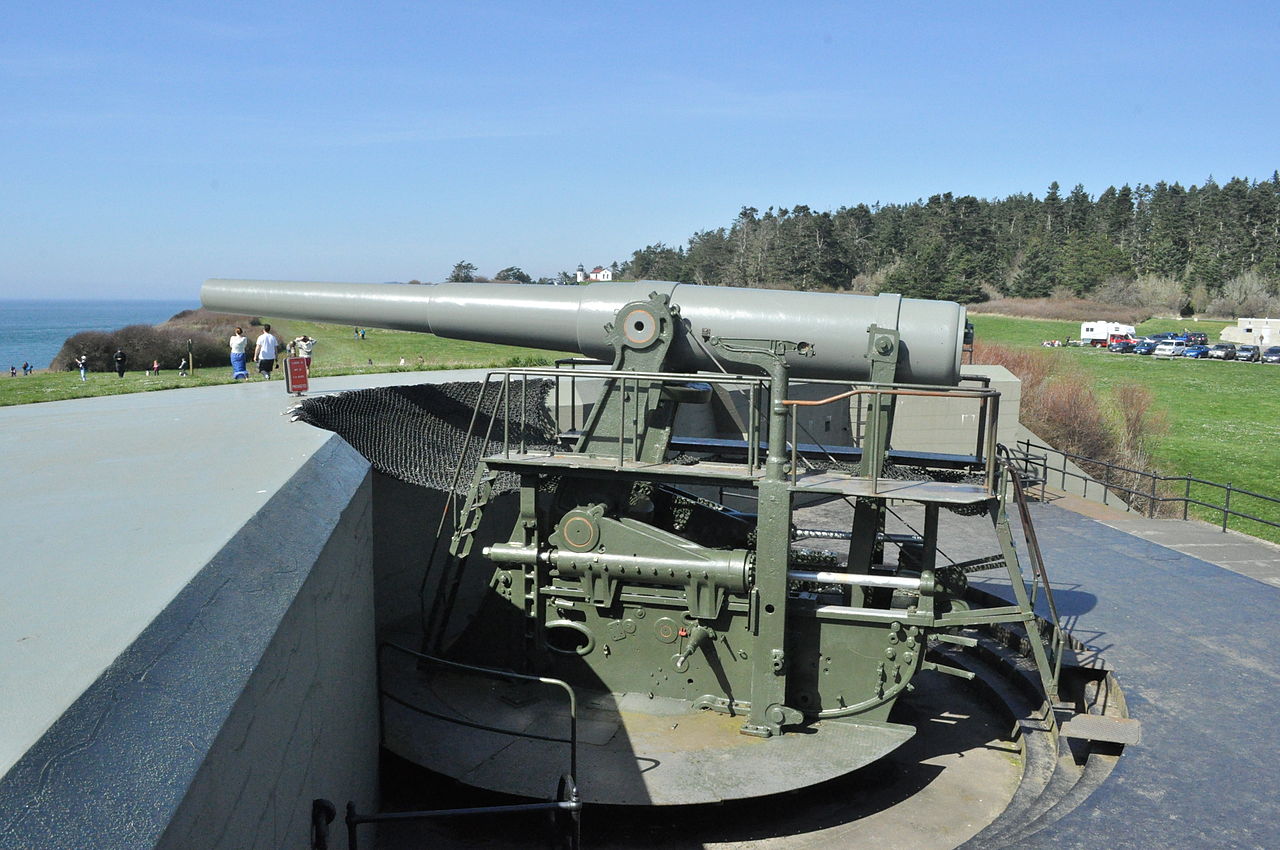
10" M1895 gun on a disappearing mount at Fort Casey, Washington
Of course, these new weapons and carriages were far more expensive than their predecessors. During the Third System, armament rarely made up more than a sixth of the cost of a work, while during the 1890s, it was usually more than half of the total cost, and often three-quarters. Of this, the gun itself went from about three-quarters of the armament cost to only half, thanks to the new and intricate carriages.
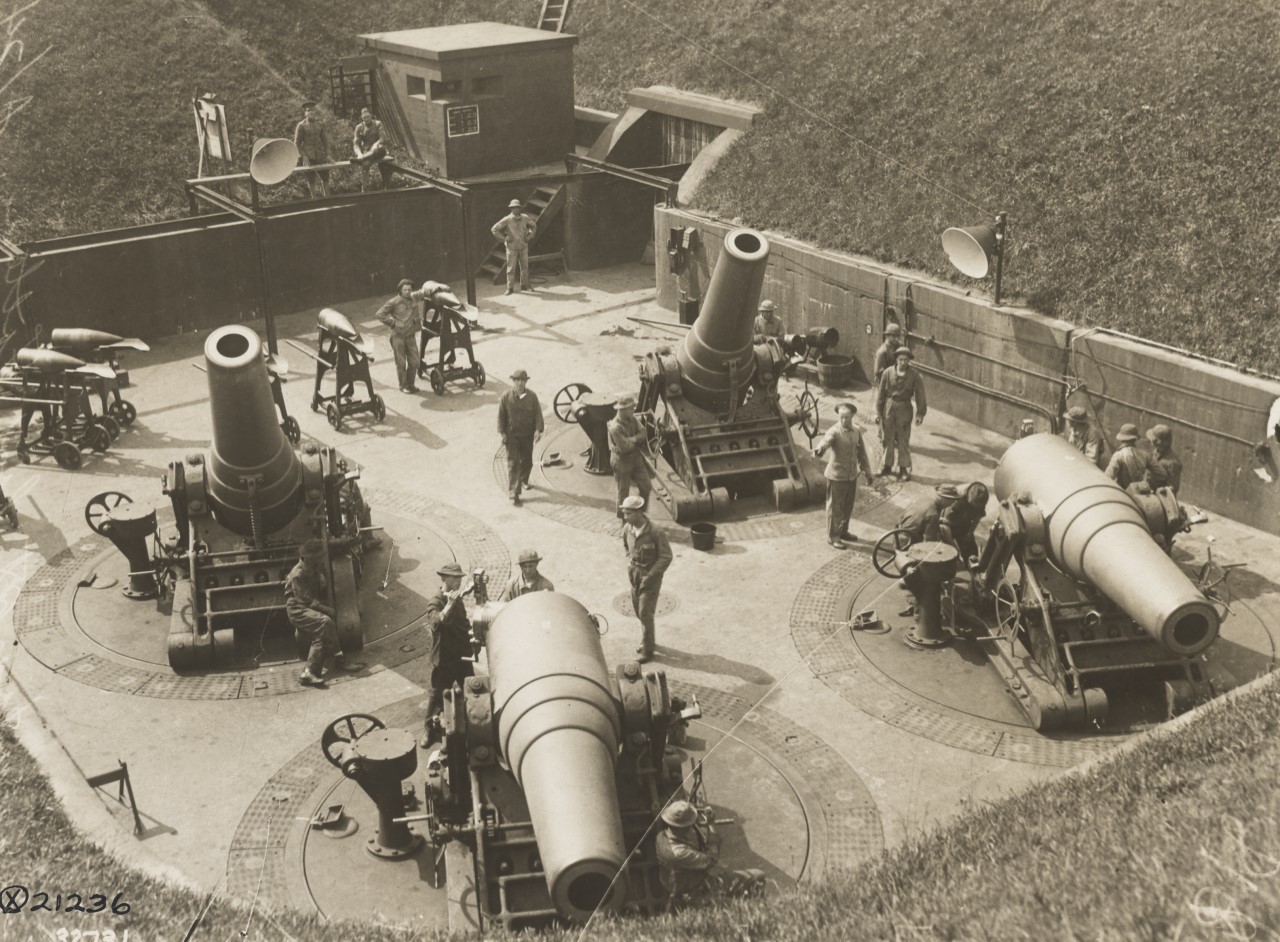
A 12" mortar battery at Fort Totten, New York
To back these up, the defenses also included large numbers of 12" mortars. These were installed in 4-mortar pits, grouped into batteries of 8 or 16. Each pit was well-protected against fire from the sea, and the whole battery would be fired together, hoping to land hits on the thinly-armored decks of the attacking warships by sheer numbers. The US was hardly alone in considering the use of high-angle fire against ships during this era,4 although it was the only country to make such extensive use of these weapons. In fact, almost 400 mortars were installed, a number that eclipsed the 300 or so conventional guns used in the Endicott fortifications.
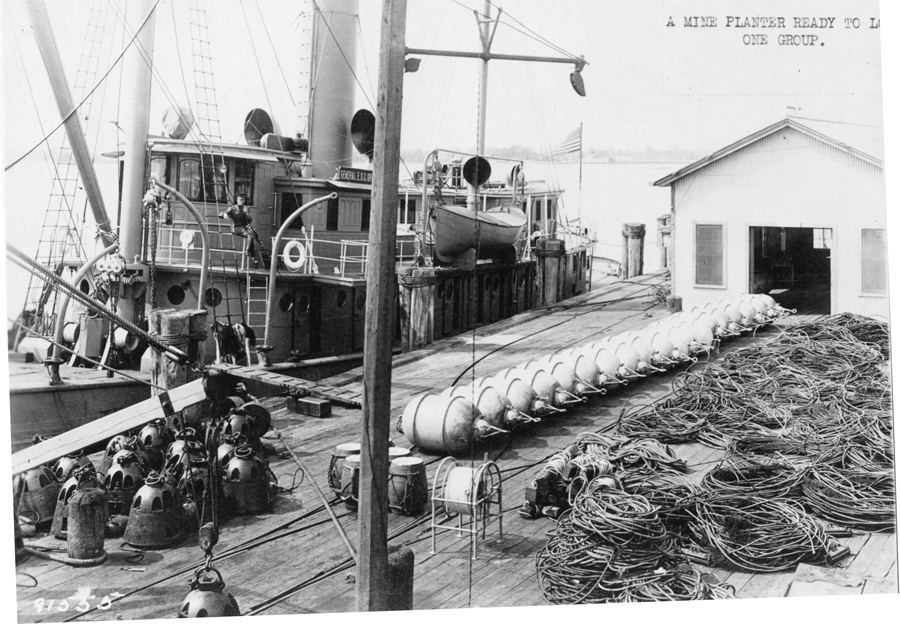
A US Army mine planter loads mines, along with their control cables
Nor were heavy weapons the entirety of the Endicott program. Coastal fortifications had always used booms and chains to keep ships in their fields of fire, and they were now supplemented by mines. These were not the contact mines we are generally familiar with, but were instead controlled mines, set off from an observation post ashore when the enemy was over them. These were obviously much less dangerous to friendly ships, as there was no risk of a vessel accidentally leaving the safe channel or hitting a mine that had broken its cable. Because mines in the water suffer from fairly rapid degradation, they were stored ashore, with units detailed to lay and maintain them in wartime. To prevent the enemy from sweeping the minefield or sending in small boats past it, batteries of QF guns, ranging from 3" to 6", were also installed.
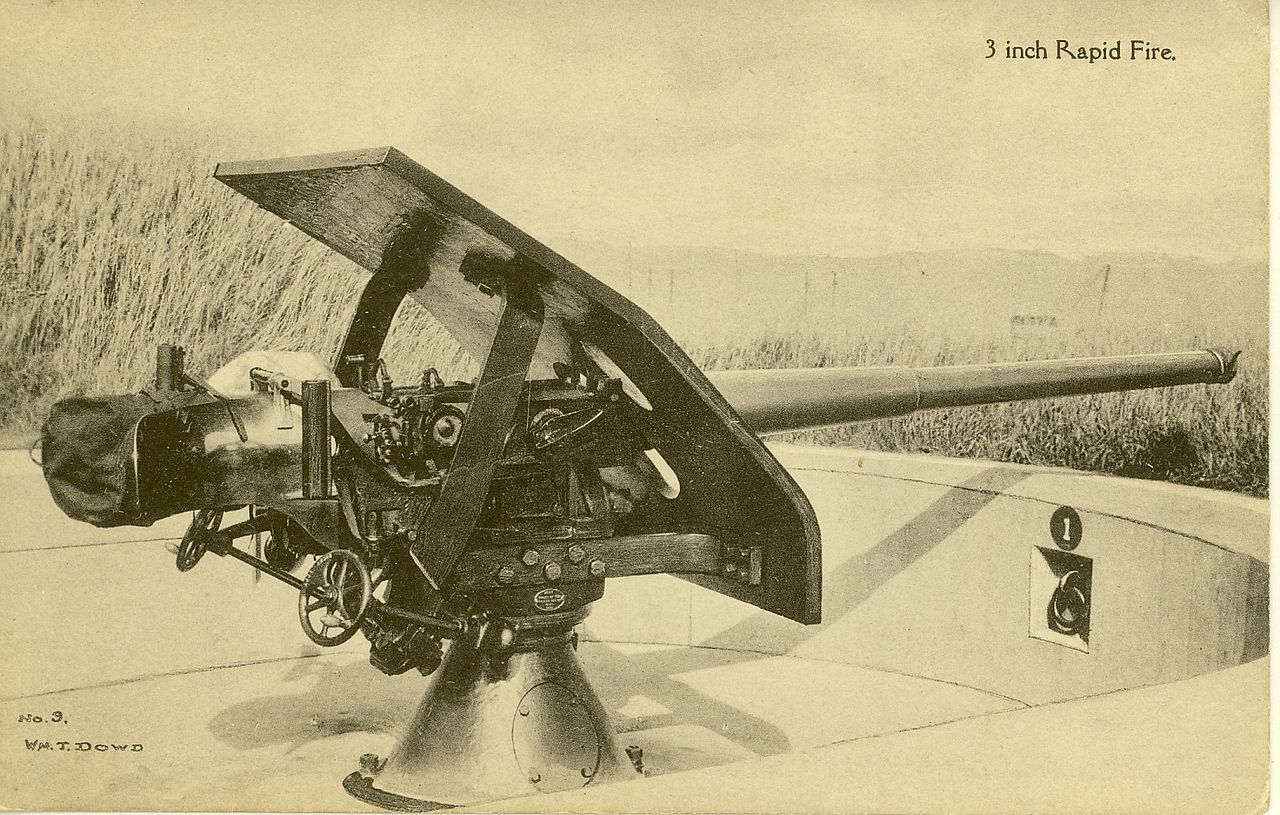
3" M1903 coastal defense gun
Much of this work was still incomplete in 1898, when war broke out with Spain. The lack of defenses panicked the US public, and concern about a Spanish raid on the American coast forced a significant fraction of the fleet to be held at Hampton Roads until it was confirmed that the Spanish were in fact in the Caribbean. Batteries were improvised by the Army, and mines were laid, but the defenses were never put to the test. Nevertheless, the panic at the outbreak of war did have a long-term effect. Despite the Navy's pivot from a focus on coastal defense and commerce raiding to Mahan's vision of the battlefleet, the US would maintain a strong program of coastal defenses, precisely to avoid the battlefleet being tied down by the weight of public opinion.
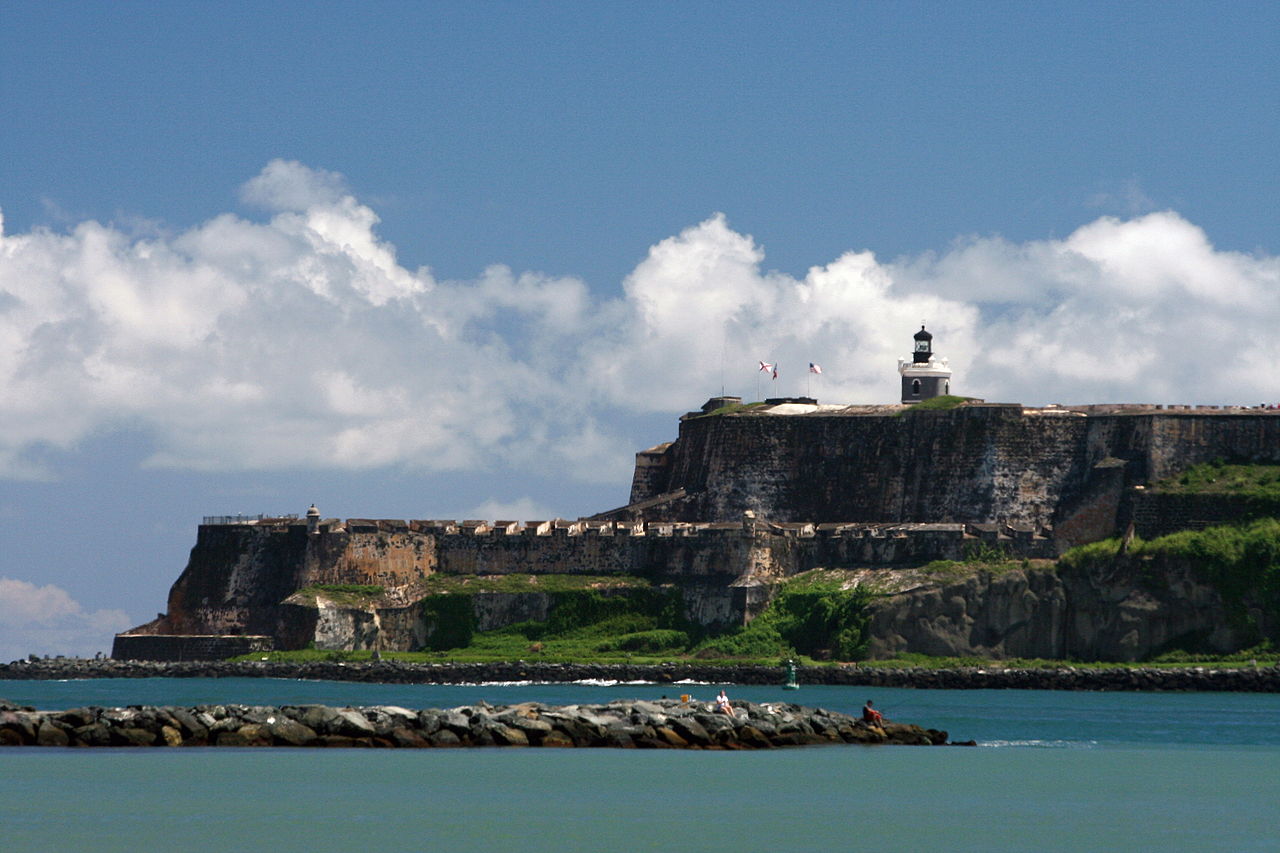
El Morro Castle in Puerto Rico, target of intense American bombardment
On the other side of the war, Spanish coastal batteries fought a number of actions with the US Navy. Many of these were minor, a few light guns protecting secondary ports facing equally light American attack. But in May, the Admiral Sampson launched a major attack on the defenses of San Juan, Puerto Rico. Neither side covered itself in glory, with the Spanish gunners proving ineffective and the Americans having trouble hitting the target. The forts intended to protect Manila also failed comprehensively in the face of Dewey's attack, with most barely engaging and a few being destroyed by the fire of his ships. Despite this, the meager defenses at Santiago were enough to keep Sampson at bay until Cervera's fleet sortied, although the nearby fort at Guantanamo was destroyed by naval gunfire. None of the Spanish positions was particularly modern, so the lessons that could be drawn were extremely limited.
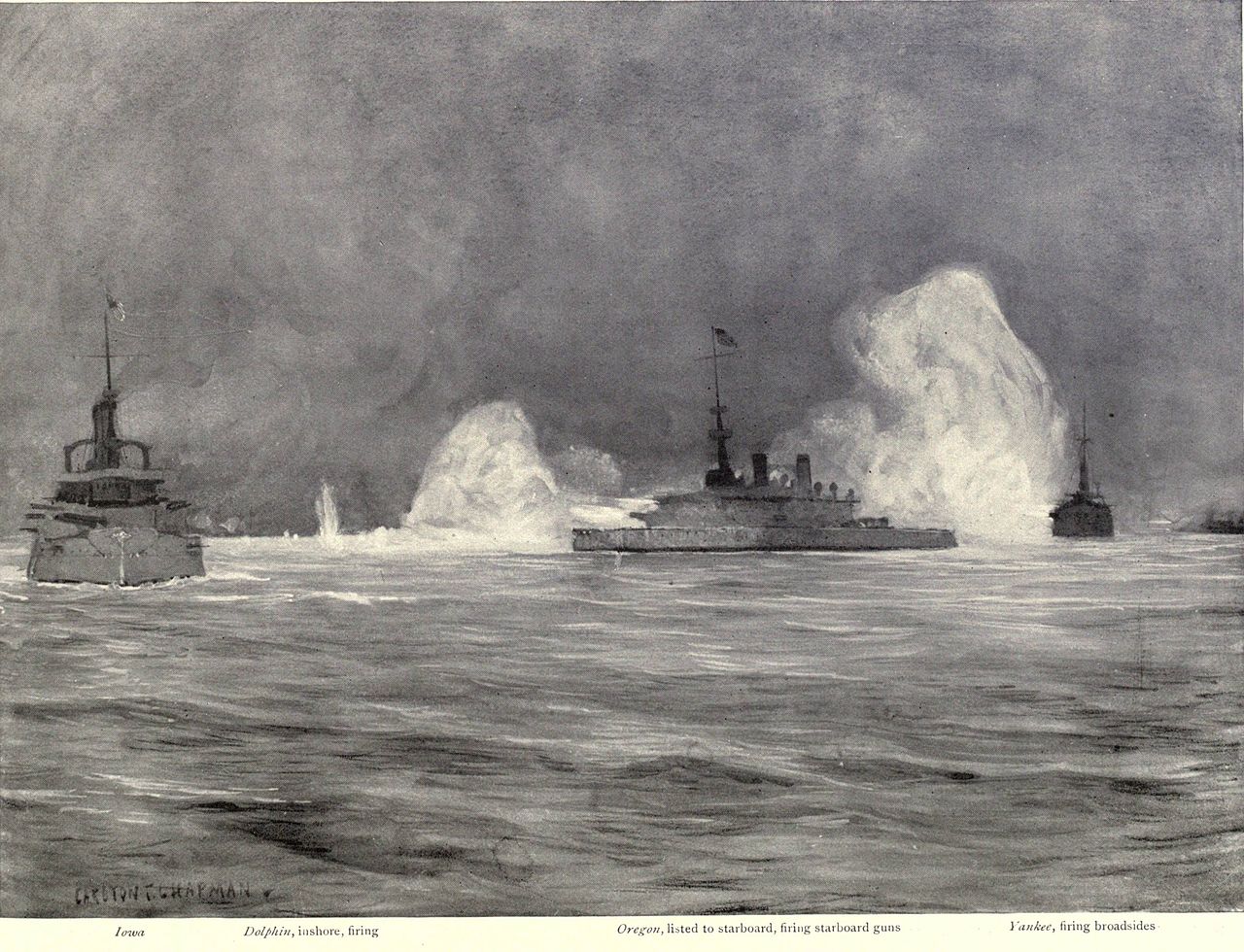
Sampson's ships bombard the defenses of Santiago
In the aftermath of the war, the US ramped up the existing building programs, and in 1905, President Roosevelt ordered another comprehensive review. We'll take a look at the results next time.
1 This is a method very similar to the barbette mounts used on some ironclads, particularly HMS Temeraire. ⇑
2 These guns had a unique system with two different loading mechanisms, one of which would load the gun while the other one brought up charges from the magazines. ⇑
3 Thanks to commenters AlphaGamma and John Schilling for finding the details on this. ⇑
4 The Canopus class pre-dreadnoughts, built around this time, had an extra armored deck due to the fear that the French were installing howitzers on their battleships. ⇑

Comments
Another interesting reference for coastal artillery of that era: Ian "Forgotten Weapons" Malcom, who normally covers small arms, does a site visit to Rinella Battery on Malta, home of the only remaining 100-ton (17.7") rifled muzzle-loader.
He's usually pretty good at convincing people to let him fire a few shots from their toys, but his mojo unfortunately doesn't extend to that level here. There's still lots of good technical detail on the loading mechanism. Well, mechanisms - there are two complete sets per gun, to at least double the rate of fire compared to ship-mounted ordnance. Very steampunk.
Interesting. The Mediterranean forts didn't really come up in research for this, primarily because there wasn't a lot going on there that wasn't being done elsewhere. But I may throw in a footnote about that, because I missed the doubled loading mechanism.
Also, when he's describing "look how big that gun is", I keep going "yes, but those numbers are smaller than the numbers for my ship's guns". I know that he's primarily a small arms guy, so I'll cut him a little slack.
Ah, now you're getting to the ones I'm familiar with. Everyone around here does school trips to the 1890s forts guarding Puget Sound, and it seems like that was the first era they really fortified the northwest coast?
https://en.m.wikipedia.org/wiki/Fort_Casey
They have some nicely preserved disappearing batteries there.
Actually, they're not technically preserved. The original guns were scrapped, as were all of that era's guns in the US. The ones in the Philippines survived because the islands were under different management at the time and a pair were brought to the US in the 60s and installed at Fort Casey.
I can say I've seen some of the only actual "preserved" US disappearing guns (having been to Corregidor AND Fort Casey). But not the Canadian ones, unfortunately.
The Sandy Hook NJ parks have a large number of preserved/recreated coastal defense setups from various eras, from at least as old as the Civil War up to some of the early nuclear age SAM sites.
I guess Coastal defence (or defense) and coastal fortification are measures taken to provide protection against military attack at or near a coastline (or other shoreline), for example, fortifications and coastal artillery. Because an invading enemy normally requires a port or harbour to sustain operations, such defences are usually concentrated around such facilities, or places where such facilities could be constructed. Coastal artillery fortifications generally followed the development of land fortifications, usually incorporating land defences; sometimes separate land defence forts were built to protect coastal forts. Through the middle 19th century, coastal forts could be bastion forts, star forts, polygonal forts, or sea forts, the first three types often with detached gun batteries called "water batteries".
The Palmerston forts are generally known in the UK as 'Palmerston's follies'. IIRC none of them were ever fully armed or garrisoned. They are impressive bits of engineering though. You can visit some of them. Fort Nelson is home to the Royal Armouries Artillery collection and is well worth a visit (it's free, but you have to book).
Wait, did the Palmerston's Follies line not make it in? Oops. I will have to fix that.